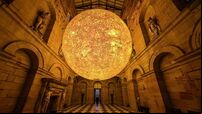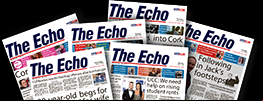Trip to LA left me with burning questions about city’s future

Driving from the airport to our three-star hotel in Downtown LA, I was agog at the width of the roads. Ten lanes of traffic going in every direction.
Back in little ol’ Ireland, the Cork to Dublin motorway was still a work in progress and my brain struggled to compute the sheer number of cars I was looking at in the City of Angels.
I was there to shoot two episodes of a science series called . Each show went behind the scenes of major events or locations to see the science and technology that underpinned the spectacle.
I had somehow managed to convince my bosses that we should fly to LA for five days to explore the science of movie-making and the science of extreme sports.
The X Games were underway at the Staples Centre, and we interviewed skateboarding legend Tony Hawkes and explained the science of skateboarding, BMX biking, and motocross.
We also spent a long, hot, sweaty day filming at Universal Studios, shooting an episode about the science of movie-making and rollercoasters!
I was excited about travelling to a major city and crossing a global destination like Los Angeles off my ‘must-see’ list. The city is home to so many iconic locations like the Hollywood Walk of Fame, Santa Monica Pier, and Venice Beach Boardwalk, familiar to me from a misspent youth watching Baywatch and Hollywood movies on repeat.
The world-famous Hollywood sign landmark in the Hollywood Hills was as familiar to me as the Cliffs of Moher.
LA was full of glamorous spots and cool locations - rooftop bars and art deco diners - but underneath the glitz was the feeling that the city didn’t make sense. The fact that you had to get in a car to go anywhere was so strange.
A jet-lagged colleague went for an early morning walk and was heckled by a ing driver - “Hey, walker!” The public transport system was non-existent, and the only way to get to a filming location on time was to leave ‘plenty of time for the traffic’.
Stuck in jams, I had time to contemplate the multi-lane congestion before me. My initial glee at the city’s cinematic landmarks soon gave way to a deeper reflection on what underpinned this sprawling metropolis.
In 2006, George W. Bush was the US President ( when he was a hated political figure, and yet he now seems like a cuddly toy in comparison to the incoming US president?).
Bush had been in power since January 2001. He initiated the 2003 invasion of Iraq to ostensibly overthrow Saddam Hussain and find weapons of mass destruction.
While the US has consistently maintained that its involvement in the Middle East is driven by broad strategic, economic, and security interests, oil has undeniably played a significant role in shaping its policies in the Middle East.
Here before me was a tangible, visual representation of the interplay between economic interests, energy security, and geopolitical strategy that had led to the controversial US involvement in the Middle East.
I didn’t have the word for it at the time, but looking back, the word I was looking for to describe LA’s sprawling urban design, heavy reliance on cars, and resource-intensive lifestyle was ‘unsustainable’.
In recent years, I researched a documentary about water, and spoke to environmentalists and NGOs in Los Angeles about how a city of almost four million people, which pipes in more than 70% of its water requirements, can cope with the effects of climate change.
Sadly, as we look at the devastating images of the recent LA firestorm (a wildfire in the middle of winter!) the answer is clear. Not very well.
The famous Joni Mitchell line “they paved paradise and put up a parking lot” could have been written to describe Los Angeles.
Early settlers who came to the city built on the floodplains of the Los Angeles River. To combat the inevitable flooding that comes with concreting flood plains, over time the LA River was channelled into an effective storm drain.
Now, when it does rain (and it hasn’t rained properly yet this winter) the water runs off roofs, driveways, and roads into gutters and into the stormwater system and out to sea.
You don’t have to be a civil engineer or hydrologist to recognise how insane that system is in a parched city.
I spoke to environmentalists who have been working to improve the city’s relationship with water by de-paving neighbourhoods, installing rainwater harvesting tech, creating climate-adapted gardens that require little water (unlike unsustainable sprinkler-irrigated green lawns) and redeg LA to be a city that works with nature to conserve and retain water.
An NGO, The River Project, has plans to restore 2,000 acres of a flood plain at the heart of LA, which would help groundwater to recharge, improve flood storage capacity and biodiversity, and help climate resilience - but there is no appetite from city officials for that nature- based approach.
Every time there is a climate catastrophe like Valencia or Hurricane Helene, climate activists wonder if this will be the event that wakes everyone up to the climate crisis.
Maybe the tragic deaths and widespread destruction of property in wealthy LA, and footage of celebrities emoting about their multi-million dollar homes going up in smoke, will make people sit up and pay attention. Or not.
Joni was very prescient. As she said, “Don’t it always seem to go, that you don’t know what you’ve got ’til it’s gone."







 App?
App?




